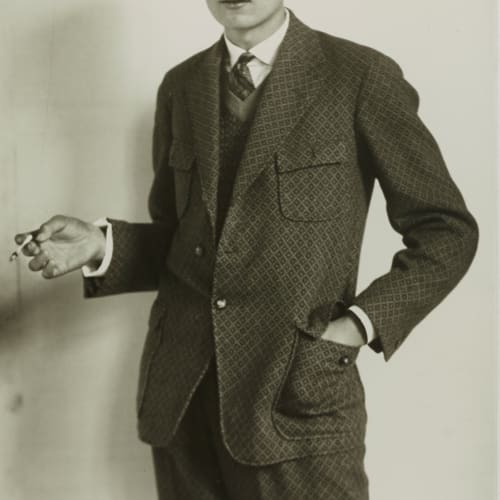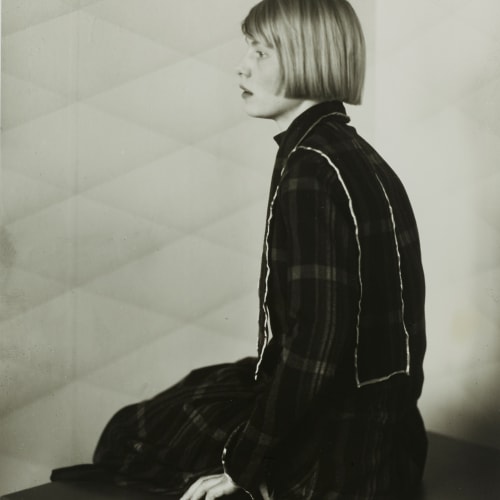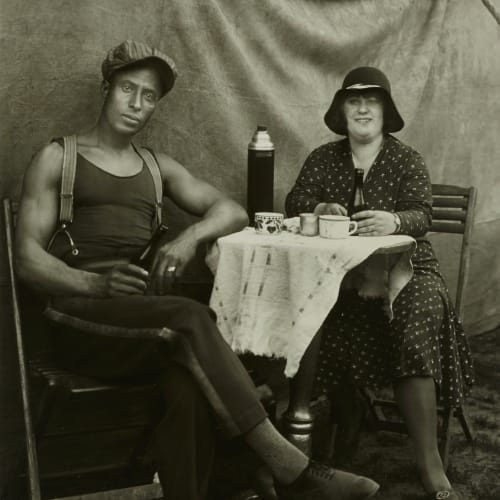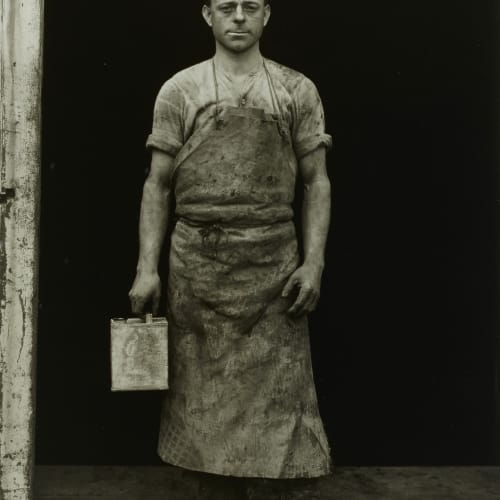At the turn of the twentieth century August Sander was in military service and an assistant in a photographic studio in Trier; he then spent the following two years working in various studios elsewhere. By 1904 he had opened his own studio in Linz, Austria, where he met with success. He moved to a suburb of Cologne in 1909 and soon began to photograph the rural farmers nearby. Around three years later Sander abandoned his urban studio in favour of photographing in the field, finding subjects along the roads he traveled by bicycle.
“Man of the Twentieth Century” was Sander’s monumental, lifelong photographic project to document the people of his native Westerwald, near Cologne. Stating that “[w]e know that people are formed by the light and air, by their inherited traits, and their actions. We can tell from appearance the work someone does or does not do; we can read in his face whether he is happy or troubled,” Sander photographed subjects from all walks of life and created a typological catalogue of more than six hundred photographs of the German people. Although the Nazis banned the portraits in the 1930s because the subjects did not adhere to the ideal Aryan type, Sander continued to make photographs. After 1934 his work turned increasingly to nature and architectural studies.
One of the most influential photographers of the twentieth century his work is in museum collections worldwide.
PHOTO LONDON BOOTH B8
19-22 May, Somerset House





